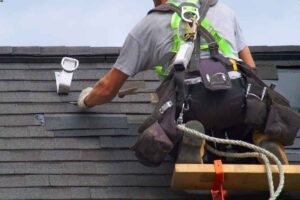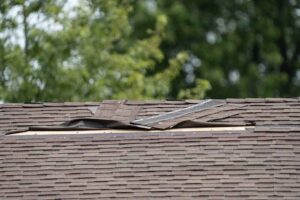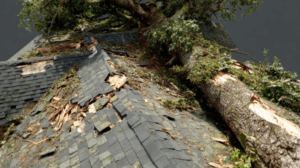If you’ve ever replaced a roof, you know it’s not something you want to rush—or get wrong. Between the cost, the planning, and the disruption, it’s one of the biggest home projects most people tackle. But here’s something many homeowners don’t realize: when you replace your roof can be just as important as how it’s replaced.
In North Carolina’s Sandhills region, timing plays a big role in how well your new roof performs. At Red Wolf Roofing, we’ve worked through every season, and we can tell you firsthand—late summer through fall is the sweet spot. The weather cooperates, materials perform better, and homeowners get a smoother, more cost-effective experience overall.
So before you schedule your replacement in the middle of a humid July or a chilly January, let’s talk about why late summer and fall are the ideal times to give your roof the upgrade it deserves.
The Role of Weather in Roof Replacement
Roofing may seem straightforward—tear off the old, install the new—but it’s a process that depends heavily on temperature and humidity. Too hot, and asphalt shingles can soften or scuff. Too cold, and adhesives don’t bond properly. Throw in the Sandhills’ unpredictable summer storms, and it’s clear that some times of year make for better roofing conditions than others.
Late summer and fall strike the perfect balance. The extreme heat of early summer starts to fade, while the cooler, drier air of autumn helps shingles seal properly. You get a faster installation, stronger adhesion, and fewer weather delays.
In other words, you get the best craftsmanship under the best conditions.
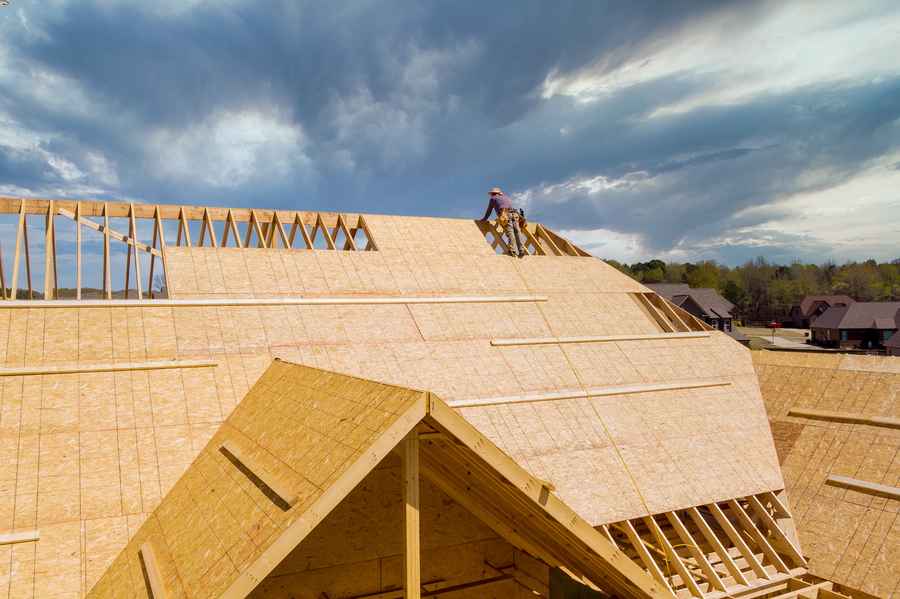
Why Late Summer and Fall Just Make Sense
There’s a reason many experienced roofing companies recommend scheduling replacements between August and November. It’s not just about comfort—it’s about performance, cost, and protection.
Here’s why this time of year works so well for Sandhills homeowners:
1. Ideal Temperatures for Installation
Asphalt shingles—the most common roofing material—need moderate heat to properly seal. The ideal range is typically between 45°F and 85°F. In late summer and fall, North Carolina’s climate sits right in that zone.
When shingles bond correctly, you get a tighter seal and better resistance against wind and water. On the flip side, installing during extreme heat or cold can lead to premature cracking, lifting, or uneven adhesion—all of which shorten the lifespan of your new roof.
2. Fewer Weather Delays
If you’ve lived in the Sandhills long enough, you know how quickly summer storms can roll in. Sudden downpours or high humidity can halt a roofing job and leave your home partially exposed. By late summer, those unpredictable weather patterns start calming down.
Autumn brings more consistent conditions—cool mornings, dry afternoons, and mild evenings. That stability allows our crews to work efficiently without constantly dodging rain clouds or rescheduling due to severe weather alerts.
3. Better Material Performance
Extreme temperatures aren’t just tough on the crew—they’re tough on the materials. Shingles stored or installed in high heat can warp, while underlayment adhesives may not cure evenly. In fall, materials stay stable during handling and installation, ensuring every piece performs as intended once the job’s complete.
4. Prepare for Winter Weather
Late summer and fall roof replacements set your home up for success when winter arrives. A brand-new roof is ready to face the cold, resist heavy winds, and keep moisture out when it matters most.
Waiting until winter or early spring risks running into leaks or structural issues during the colder months when repairs are more complicated and costly. Think of fall as your home’s “tune-up” season before the next round of weather hits.
5. More Availability and Scheduling Flexibility
Spring and early summer are peak seasons for roofing contractors. Everyone’s rushing to repair storm damage or replace older roofs before hurricane season. By late summer and fall, schedules begin to open up again.
That means faster service, more flexible scheduling, and less competition for premium materials. You also get the benefit of working with a crew that’s seasoned from months of busy-season work—professionals operating at peak efficiency.
6. Energy Efficiency and Comfort
A new roof installed before winter helps lock in warmth and improve insulation, reducing your energy bills when temperatures drop. Plus, modern roofing systems reflect heat more effectively, which means when next summer rolls around, your home will stay cooler too.
The Hidden Cost of Poor Timing
Replacing a roof in the wrong season doesn’t just affect convenience—it can affect quality and long-term performance.
Here’s what can happen when timing works against you:
- Summer Heat Damage: When temperatures soar past 90°F, shingles become overly pliable. That makes them prone to scuffing during installation and more likely to deform before they cool.
- Winter Adhesion Problems: In cold weather, sealant strips on shingles don’t bond properly, which can lead to lifted edges and leaks down the line.
- Spring Storm Delays: Early-season rain and hailstorms can cause multiple start-and-stop delays, dragging out the project and increasing costs.
- Inconsistent Curing: Extreme temperature swings—common in early spring and late winter—can cause adhesives to expand and contract before fully curing, reducing durability.
Roofing in less-than-ideal conditions often means cutting corners just to get the job done—and that’s never how we operate. Late summer and fall let us focus on precision, quality, and lasting protection instead of rushing against the weather.
Signs It’s Time to Schedule a Roof Replacement
Timing is important, but so is recognizing when your roof actually needs attention. If you’ve been putting off replacement, the transition between summer and fall is a great time to act—before minor problems become major ones.
Look for these warning signs:
- Widespread granule loss: Check your gutters for sandy buildup—it’s a sign your shingles are breaking down.
- Cracked or curled shingles: These signal age and UV fatigue, especially on sun-facing slopes.
- Frequent leaks or water stains: Water intrusion often starts small and spreads quickly.
- Sagging or soft decking: This points to deeper structural issues beneath the shingles.
- Your roof is 15–20 years old: Most asphalt roofs in North Carolina reach their natural limit around that age, depending on maintenance and weather exposure.
If you’re noticing one or more of these issues, don’t wait until winter’s chill sets in. Late summer and fall are the perfect times to address them with minimal risk and maximum benefit.
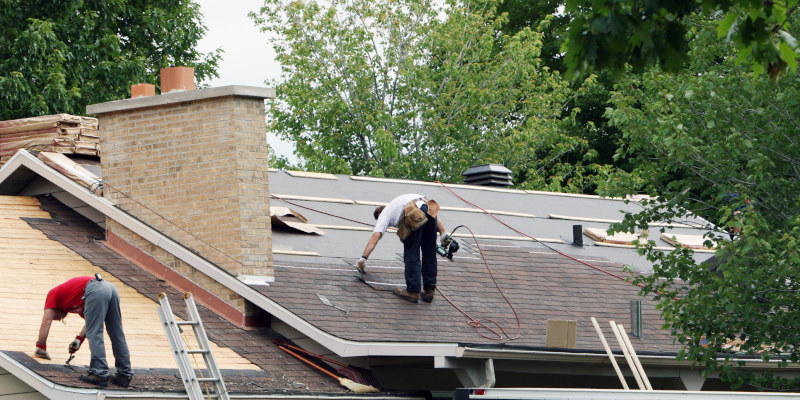
What to Expect During a Fall Roof Replacement
Replacing your roof isn’t as disruptive as you might think—especially when you plan it at the right time. At Red Wolf Roofing, we handle everything from inspection to cleanup, keeping the process simple and stress-free.
Here’s how a typical project unfolds:
- Initial inspection: We assess your roof’s condition, identify weak points, and determine whether full replacement or sectional work makes the most sense.
- Material selection: We’ll help you choose durable, energy-efficient shingles designed to handle North Carolina’s climate.
- Scheduling and preparation: We coordinate a timeline that minimizes disruption, ensuring weather and temperature are ideal.
- Removal and installation: Our crew removes old materials, inspects decking, and installs your new roof with precision.
- Cleanup and final check: Once the work is done, we perform a full inspection and leave your property spotless.
Fall’s steady weather helps us stay on schedule and deliver consistent results from start to finish.
Why Homeowners in the Sandhills Trust Red Wolf Roofing
We’re not just another roofing company—we’re your neighbors. Our team lives and works right here in the Sandhills, so we understand the region’s unique weather patterns, soil conditions, and architectural styles. We know how the heat, humidity, and storms affect roofs, and we tailor our recommendations accordingly.
At Red Wolf Roofing, we pride ourselves on doing the job right the first time—no shortcuts, no surprises. Whether you’re planning ahead for a replacement or responding to storm damage, we’ll guide you through every step with transparency and care.
We use top-quality materials that are proven to handle the North Carolina climate and back our work with warranties that give you real peace of mind.
Get Ahead of the Weather—and the Crowds
If your roof is showing its age or you’re planning a replacement in the near future, late summer and fall are the best times to do it. You’ll benefit from stable weather, faster installation, and stronger, longer-lasting results—all before winter arrives.
At Red Wolf Roofing, we’re here to help you make the most of the season. Our expert team will inspect your current roof, provide an honest assessment, and create a plan that fits your timeline and budget.
Don’t wait until a cold snap or storm forces your hand. Contact Red Wolf Roofing today to schedule your late-summer or fall roof replacement in the Sandhills region. Because when it comes to protecting your home, the right timing makes all the difference.

